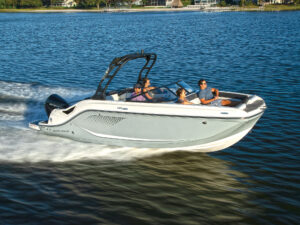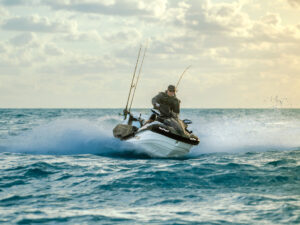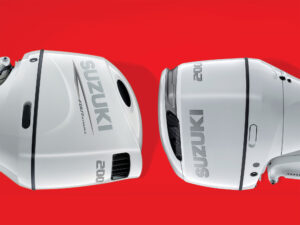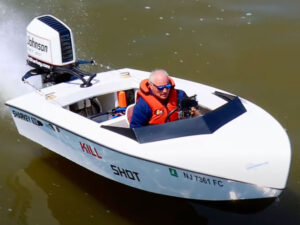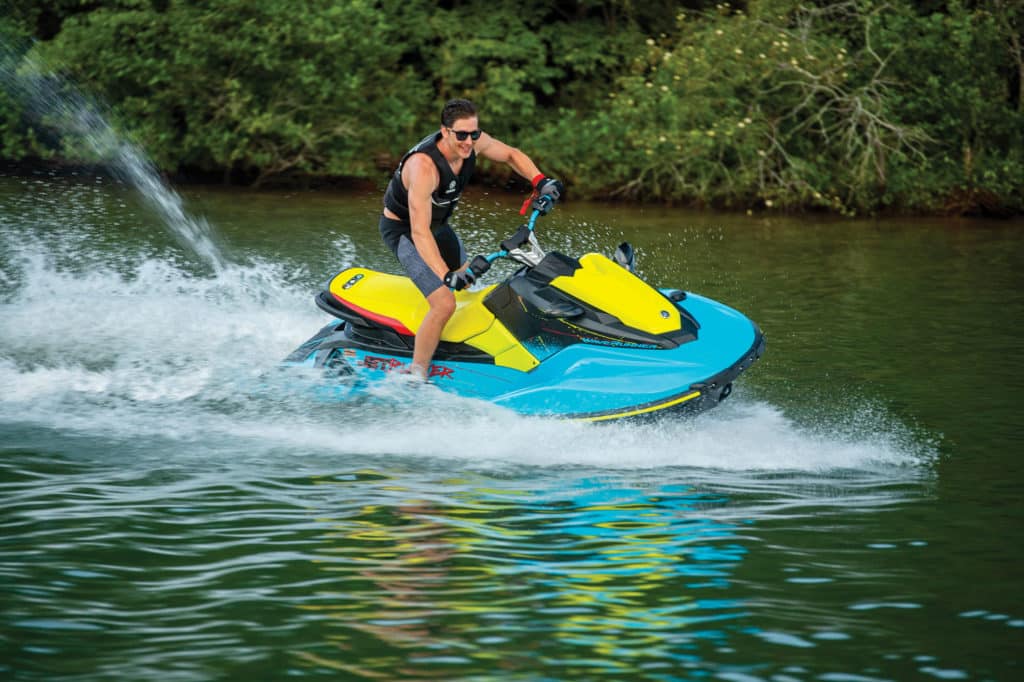
Personal watercraft are built with an impressive array of safety features, but just like any boat, safe operation requires a familiarity with the craft’s controls, handling characteristics, and knowledge of any category-specific safety concerns.
Read this primer to help make your next ride fun and as safe as possible.
Thrust
Before riding any personal watercraft, thoroughly familiarize yourself with the controls. Like a bicycle or motorcycle, handlebars dictate direction. A trigger-style throttle, adjacent to the right-hand grip, controls speed. Drivers should wear an engine cutoff safety (ECOS) lanyard on the wrist or attached to their life jacket. If worn on the wrist, the lanyard must include a wrist strap because a cord alone could slip off.
Steering is directly related to thrust exiting the pivoting nozzle. You must apply throttle in order to steer. Releasing the throttle, pulling the safety lanyard or stopping the engine while underway will all result in a loss of directional control, regardless of input at the handlebars.
Because drivers often respond to a potential collision by releasing the throttle and negating handlebar input, personal watercraft now incorporate collision-avoidance systems. These systems detect the combination of a sudden release of the throttle and full turn of the handlebars and respond by applying enough thrust to initiate the avoidance turn the rider intended. Practice releasing the throttle, then turning the bars at speed to get used to how the craft responds, but realize that best results will come from active driver input.
Speed Governors
Speed governors are commonplace. Consider activating these when letting an inexperienced rider use the craft or when wanting to limit a rider’s access to the engine’s full potential. Manufacturers use a variety of methods—a radio-frequency lanyard connection, dedicated smart key or punched-in code—to activate governed-speed modes. Some models also allow owners to tame the acceleration curve.
Stopping Distance
A PWC may have a longer stopping distance than expected. Keep this in mind when approaching another boat, dock or shoreline, and respond by slowing in advance.
Many modern craft offer braking and deceleration systems. These combine electronic solutions with reverse functionality and work by partially deploying the reverse bucket to both grab the water and redirect pump thrust, slowing the craft without causing the bow to dive or compromising control. Familiarize yourself with the operation of these systems and practice using them on the water to gain a feel for how quickly they respond and what stopping distance to expect.
Riding Gear
Recent PWC models all sport a warning sticker, a graphic noting that neoprene shorts or a wetsuit has become almost as important as a life jacket for safety, particularly for women. Though rare, severe rectal, vaginal and internal injuries have resulted from riders falling backward off the saddle and into the powerful stream of water exiting the pump. Passengers are particularly vulnerable due to their position on the saddle. Drivers are less at risk because they are required to wear the ECOS lanyard.
Read Next: Operating a PWC Responsibly
Newer neoprene riding gear is comfortable and stylish. Numerous boardshorts styles that incorporate a hidden neoprene liner are also available. Though odds of injury are admittedly slim, we highly recommend—as do all PWC manufacturers—adding a layer of neoprene to your wardrobe.
Other valuable riding gear include eye protection, as well as footwear and gloves for traction, grip and protection.

